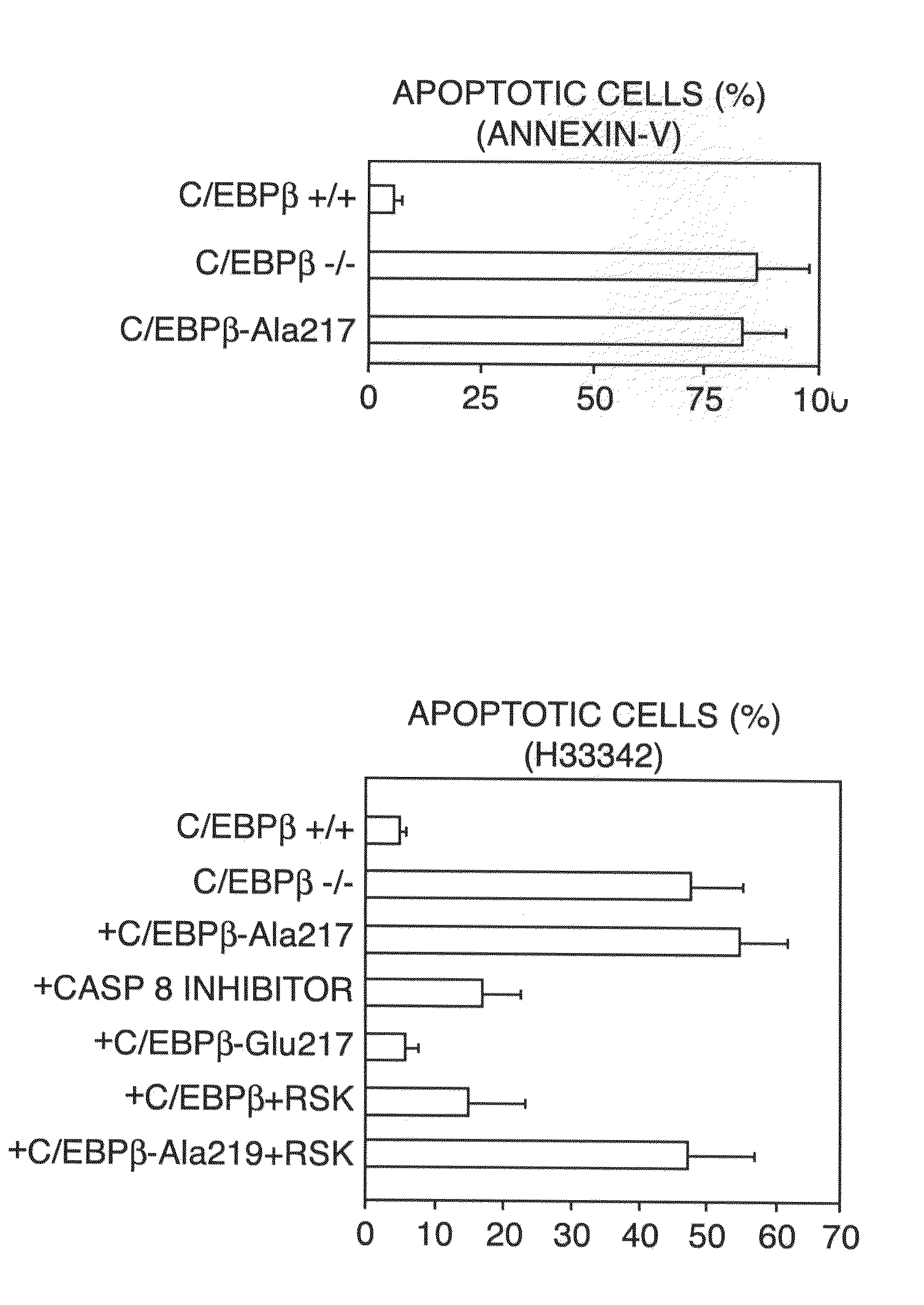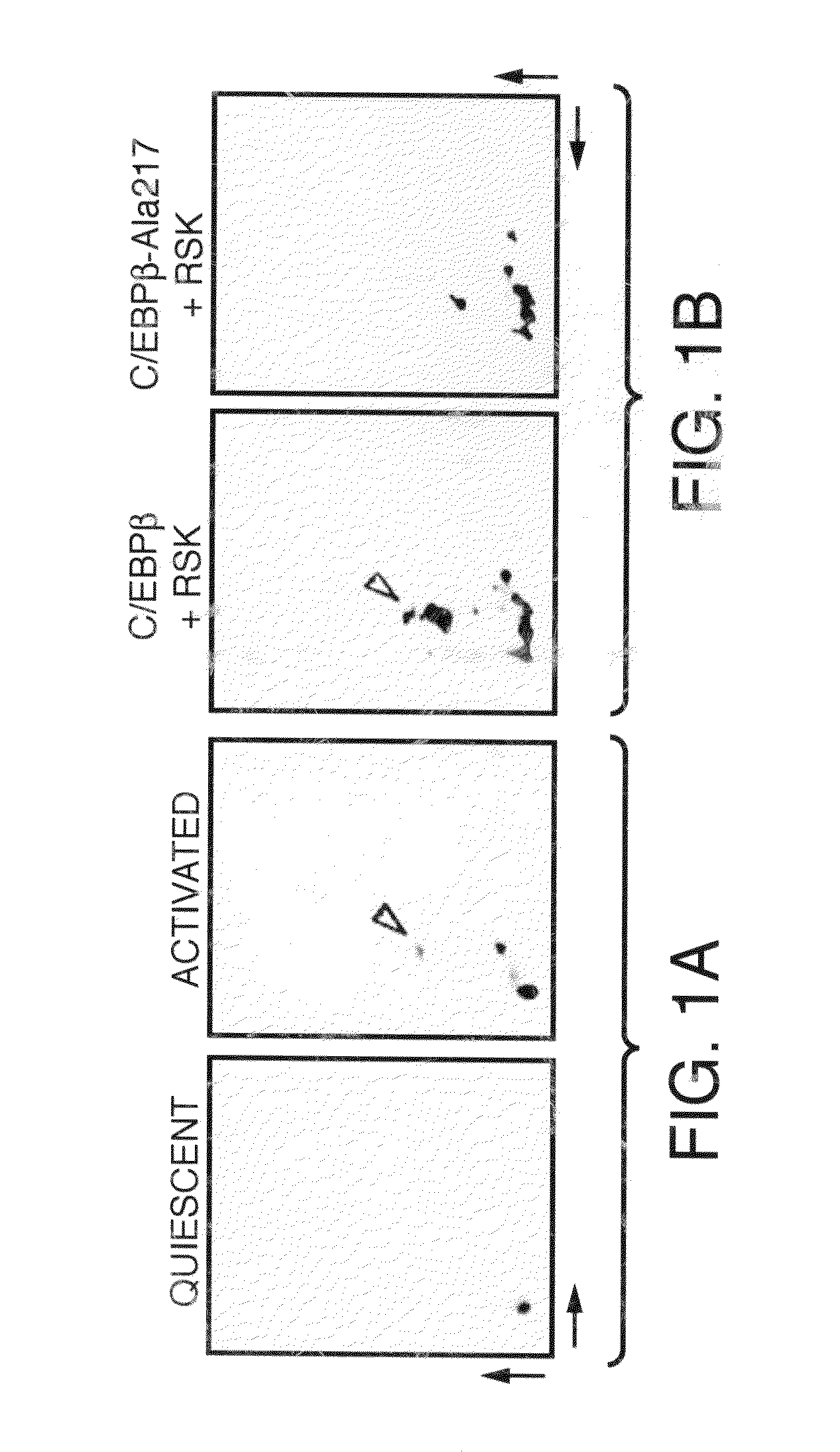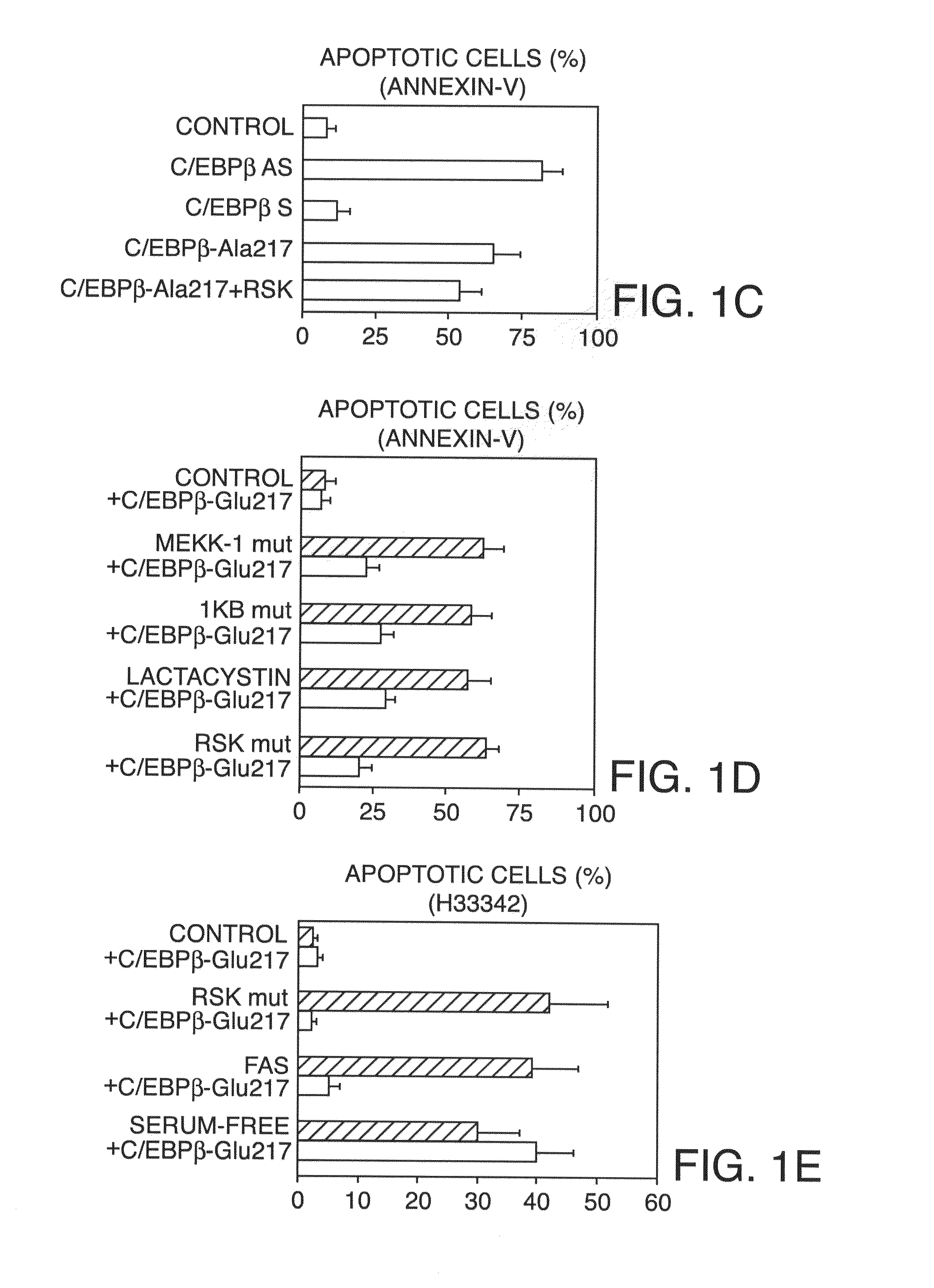Treatment Of Disease By Inducing Cell Apoptosis
a technology of inducing cell apoptosis and disease, which is applied in the direction of peptide/protein ingredients, peptide sources, instruments, etc., can solve the problems of no established treatment for hepatic fibrogenesis, achieve the prevention of reduce or complete cessation of fibrous tissue production, and prevent the activation and proliferation of hepatic stellate cells
- Summary
- Abstract
- Description
- Claims
- Application Information
AI Technical Summary
Benefits of technology
Problems solved by technology
Method used
Image
Examples
example 1
Cell Cultures and Transfections
[0154]Adult male Sprague-Dawley rats and adult male C / EBPβ+ / + and C / EBPβ− / − (Screpanti et al., supra; and Buck et al., [1999], supra), C / EBPβ-Ala217 and C / EBPβ-Asp105 transgenic mice were used for the isolation of primary hepatic stellate cells (Houglum et al., supra). Primary hepatic stellate cells were isolated by collagenase / pronase perfusion and purified by a single step density Nycodenz gradient (Accurate Chemical & Scientific) as known in the art (See, Lee et al., [1995], supra). Cells were plated on type I collagen matrix (Becton Dickinson) or EHS matrix (Matrigel, Collaborative Biomedical Products). Cells were cultured with 10% fetal calf serum / 10% fetal bovine serum and transfected with lipofectamine (GIBCO) for DNA vectors or with the Chariot reagent (Active Motif) for peptides (10 μM) as known in the art (See, Houglum et al., supra; and Morris et al., J. Biol. Chem., 274:24942-24946 [1999]). Transgenic mice expressing rat C / EBPβ-Asp105 mutan...
example 2
Fluorescence Microscopy Methods
[0156]Fluorescent labels were observed using a triple-channel fluorescence microscope. The fluorochromes utilized were FITC and Texas red (Molecular Probes). The number of annexin V (+) cells was determined by in vivo microscopy as known in the art (See, Rudel and Bokoch, supra) among all cells or those expressing the GFP indicator protein either co-transfected with C / EBPβ proteins, or alone. These values are reported herein as a percentage of annexin V (+) for cells expressing the transfected DNA. At least 1000 cells were analyzed per experimental point, including at least 100 cells expressing the transfected DNA (Buck and Chojkier, EMBO J., 15:1753-1765 [1996]; Buck et al., [1994], supra; and Buck et al., [1999], supra). The ApoAlert mitochondrial-sensor assay (Clontech) used in some experiments utilizes a cationic dye that fluoresces red when aggregated within the mitochondria in healthy cells and green when it remains in monomeric form in the cytos...
example 3
Animal Procedures and Testing
[0158]As described herein, investigations were conducted to determine whether hepatic stellate cell activation is stimulated by CCl4, a hepatotoxin that induces hepatic oxidative stress and liver fibrogenesis (Houglum et al., supra; and Chojkier, supra). Transgenic mice expressing rat C / EBPβ-Asp105 or mouse C / EBPβ-Ala217 were generated as described herein, using methods known in the art (See, Houglum et al. [1995]. supra; and Lee et al. [1995], supra) and back-crossed to FVB mice. The presence of the neo gene was used to identify these transgenic mice by Southern blotting.
[0159]C / EBPβ+ / +, C / EBPβ− / − and C / EBPβ-Ala217 or C / EBPβ-Asp105 transgenic mice (25 g) each received a single intraperitoneal injection of CCl4, in mineral oil (1:1, vol / vol) (50 μl) or mineral oil only (25 μl) (Buck et alt, [1999], supra). Twelve hours later, animals were sacrificed and immunofluorescence analyzed by confocal microscopy (Buck et al., [1994], supra). Stellate cells were i...
PUM
| Property | Measurement | Unit |
|---|---|---|
| length | aaaaa | aaaaa |
| nucleic acid sequences | aaaaa | aaaaa |
| structure | aaaaa | aaaaa |
Abstract
Description
Claims
Application Information
 Login to View More
Login to View More - R&D
- Intellectual Property
- Life Sciences
- Materials
- Tech Scout
- Unparalleled Data Quality
- Higher Quality Content
- 60% Fewer Hallucinations
Browse by: Latest US Patents, China's latest patents, Technical Efficacy Thesaurus, Application Domain, Technology Topic, Popular Technical Reports.
© 2025 PatSnap. All rights reserved.Legal|Privacy policy|Modern Slavery Act Transparency Statement|Sitemap|About US| Contact US: help@patsnap.com



